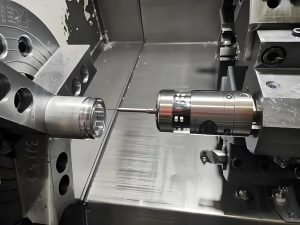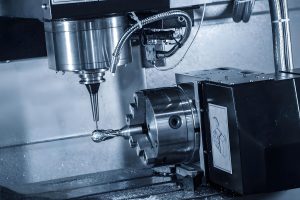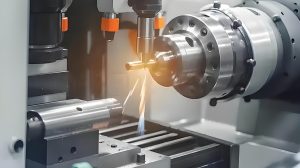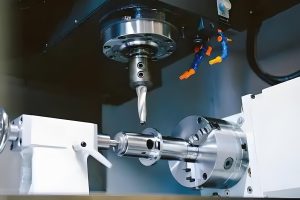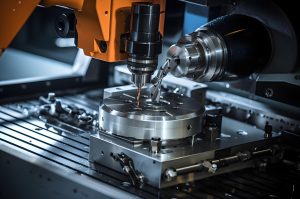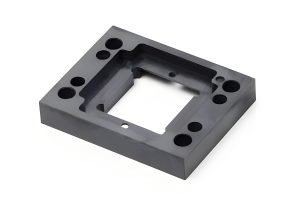在现代制造格局中, high precision CNC machining has emerged as a cornerstone technology, playing a pivotal role in diverse industries. 高精度CNC加工, or Computer Numerical Control machining, is a manufacturing process that uses pre-programmed computer software to control the movement of factory tools and machinery. This advanced form of machining enables the creation of highly intricate and accurate parts with tolerances often measured in micrometers.
The significance of high precision CNC machining cannot be overstated. 在航空航天等行业, 汽车, 医疗的, 和电子产品, the demand for components with tight tolerances and complex geometries is ever – increasing. 例如, 在航空航天领域, engine components need to be manufactured with extreme precision to ensure optimal performance and safety. A slight deviation in the manufacturing of a turbine blade could lead to catastrophic failure during flight. 在医疗领域, 精确 – made implants must match the exact anatomical dimensions of patients for successful surgeries and long – term health benefits.
High precision CNC machining offers several advantages over traditional machining methods. 首先, it provides a high level of accuracy. With the help of computer – controlled systems, the chances of human error are significantly reduced. 第二, it allows for the production of complex shapes that would be extremely difficult or even impossible to achieve through manual machining. 第三, CNC machining is highly efficient, enabling high – volume production while maintaining consistent quality.
然而, achieving high precision in CNC machining is not without its challenges. It requires a combination of advanced technology, skilled operators, and strict quality control measures. 在以下各节中, we will explore in detail the key factors that contribute to achieving high precision in CNC machining, and how Rapidefficient stands out in the field of CNC aluminum processing services.
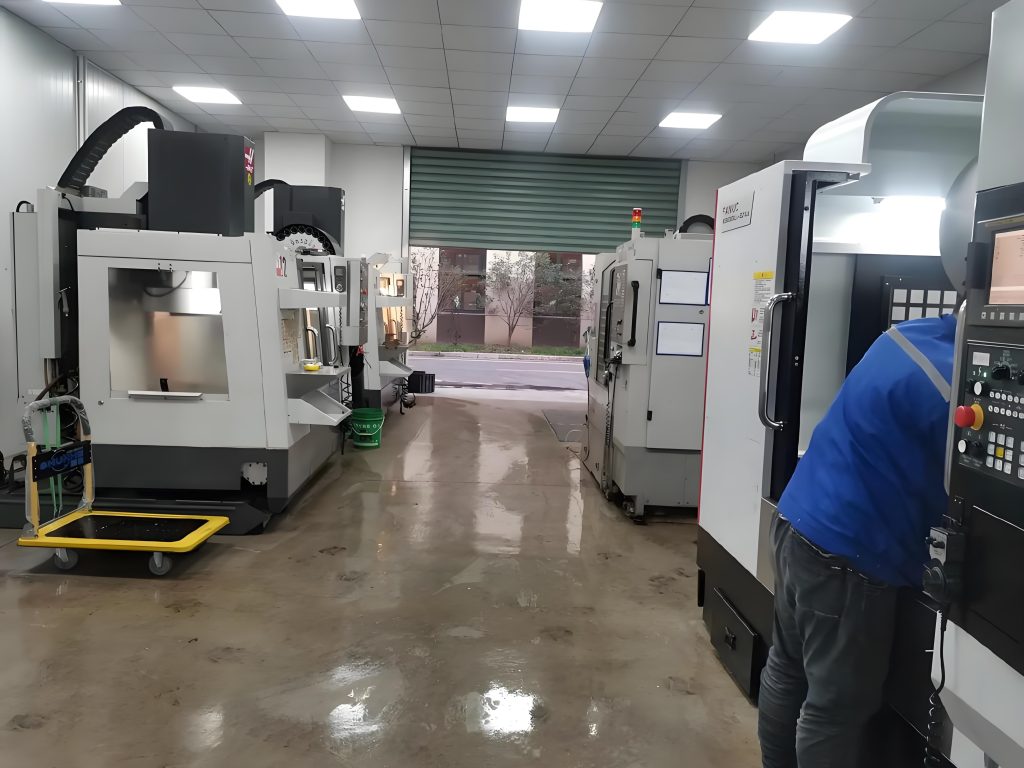
Factors Influencing Precision
1. Machine Quality and Maintenance
The quality of the CNC machine is fundamental to achieving high precision. 高的 – end CNC machines are characterized by their exceptional rigidity and stability. Rigidity ensures that the machine structure can withstand the cutting forces during machining without significant deformation. 例如, a machine with a rigid bed and sturdy column can maintain the accuracy of the tool’s movement, resulting in more precise cuts. Stability, 另一方面, refers to the machine’s ability to operate smoothly over time. A stable machine reduces vibrations, which are a major cause of inaccuracies in machining.
Regular maintenance is equally crucial. Maintenance tasks such as lubricating moving parts, checking for loose components, and calibrating the machine’s axes should be carried out at scheduled intervals. Lubrication reduces friction between moving parts, preventing premature wear and ensuring smooth operation. Loose components can cause the machine to vibrate or the tool to deviate from its intended path, leading to inaccuracies. Calibration ensures that the machine’s axes are moving precisely according to the programmed instructions. 例如, if the X – axis of a CNC machine is not calibrated correctly, the dimensions of the machined part in the X – direction will be off.
2. Tool Selection and Wear
The choice of cutting tools has a profound impact on machining precision. Different tool materials, such as high – speed steel (HSS), 碳化物, and diamond – coated tools, have distinct properties. 碳化物工具, 例如, are known for their high hardness and wear resistance, making them suitable for high – speed machining of hard materials like steel. They can maintain a sharp cutting edge for a longer time compared to HSS tools, resulting in more accurate cuts.
The geometric shape of the tool also matters. Tools with precise geometries can create complex shapes with high accuracy. 例如, end mills with specific flute designs can achieve better chip evacuation, reducing the chances of chip – related errors during machining.
Tool wear is an inevitable factor in CNC machining. As the tool cuts through the material, its cutting edge gradually wears down. This wear can lead to changes in the tool’s geometry, causing the machined part to deviate from the desired dimensions. To address this, continuous monitoring of tool wear is essential. There are various methods for monitoring tool wear, such as direct measurement using optical microscopes, indirect measurement through sensors that detect changes in cutting forces or vibrations, and using tool – life prediction models based on machining parameters. Once the tool wear reaches a certain threshold, the tool should be replaced to maintain the required precision.
3. Material Properties
The properties of the workpiece material play a significant role in determining the achievable precision. Hardness is one such property. Hard materials are more difficult to machine and require more robust tools and higher cutting forces. If the cutting forces are not properly controlled, they can cause the workpiece to deform or the tool to break, both of which lead to reduced precision. 例如, machining hardened steel requires carbide – tipped tools and careful adjustment of cutting parameters to avoid tool breakage and ensure accurate machining.
Toughness is another important property. Tough materials can absorb more energy during cutting, which may also affect the cutting process and precision. Materials with high toughness may cause the tool to deflect or chatter, resulting in surface roughness and dimensional inaccuracies.
The thermal expansion coefficient of the material is also critical. 加工时, heat is generated due to the friction between the tool and the workpiece. If the material has a high thermal expansion coefficient, it will expand as it heats up. This expansion can cause dimensional changes in the workpiece, leading to inaccuracies. 例如, 加工铝时, which has a relatively high thermal expansion coefficient, special cooling techniques are often employed to keep the workpiece temperature stable and maintain precision.
4. Programming and Control Systems
Precise programming is the key to translating the design of a part into a successful machining operation. One of the crucial aspects of programming is the planning of the tool path. A well – planned tool path ensures that the tool moves in the most efficient and accurate way to create the desired shape. 例如, in contour milling, the tool path should be designed to follow the exact contour of the part, taking into account factors such as the tool’s radius and the direction of the cut.
The setting of feed rates and cutting depths is also vital. The feed rate determines how fast the tool advances along the workpiece, while the cutting depth determines how much material is removed in each pass. Incorrect settings can lead to issues such as excessive tool wear, poor surface finish, and dimensional inaccuracies. 如果饲料率太高, the tool may not be able to remove the material properly, causing it to chip or break. If the cutting depth is too large, it can generate excessive heat and stress, deforming the workpiece.
Advanced control systems in CNC machines play a significant role in achieving high precision. These systems use feedback mechanisms to constantly monitor and adjust the machine’s operation. 例如, a servo – control system can detect any deviation in the position of the machine’s axes and make immediate corrections to ensure that the tool follows the programmed path accurately. Some modern CNC machines also feature adaptive control systems that can adjust the machining parameters in real – time based on factors such as tool wear, 切削力, and workpiece material properties, further enhancing the precision and efficiency of the machining process.
Strategies for Achieving High Precision
1. Precision Calibration
Regular calibration of the CNC machine is essential for maintaining high precision. The calibration process involves several key steps. 第一的, the machine’s axes need to be checked for straightness, parallelism, and perpendicularity. This can be done using precision measuring tools such as laser interferometers and ball bar testers. A laser interferometer can accurately measure the linear displacement of the axes, detecting any deviations from the ideal path. 例如, it can measure the movement of the X – axis with sub – micron accuracy, ensuring that the axis moves in a perfectly straight line.
Ball bar testers, 另一方面, are used to check the circular motion of the machine’s axes. They can detect errors such as pitch errors, yaw errors, and roll errors. By running a ball bar test, the operator can identify if there are any issues with the machine’s kinematic performance.
The frequency of calibration depends on various factors, including the frequency of use, the type of machining operations, and the environment in which the machine operates. For high – precision machining applications where tight tolerances are required, calibration may be necessary on a daily or weekly basis. In less demanding applications, calibration can be done monthly or quarterly.
The importance of calibration cannot be overstated. An uncalibrated machine can introduce significant errors into the machining process. 例如, if the Z – axis of a CNC milling machine is not calibrated correctly, the depth of cut may vary, resulting in parts with inconsistent heights. Calibration ensures that the machine’s movements are in line with the programmed instructions, reducing errors and improving the accuracy of the machined parts.
2. Error Compensation
Error compensation is another crucial strategy for achieving high precision in CNC machining. There are two main types of errors that need to be addressed: systematic errors and random errors.
Systematic errors are consistent and predictable errors that occur during the machining process. These errors can be caused by factors such as thermal expansion of the machine components, backlash in the drive system, and tool wear. To compensate for thermal expansion, modern CNC machines often use temperature – sensing devices. These sensors can detect changes in the temperature of the machine’s structure and automatically adjust the machining parameters to account for the thermal expansion. 例如, if the spindle heats up during operation, the machine can adjust the position of the tool to maintain the correct cutting depth.
Backlash, which is the play or clearance in the mechanical components of the drive system, can be compensated for through software – based methods. The CNC control system can be programmed to add a small offset to the tool’s movement to counteract the backlash. This ensures that the tool moves precisely to the desired position, even when there is some play in the drive system.
Random errors, 另一方面, are unpredictable and can occur due to factors such as vibrations in the machining environment, electrical noise, and variations in the workpiece material. One way to compensate for random errors is through the use of advanced filtering algorithms in the CNC control system. These algorithms can analyze the data from sensors on the machine, such as accelerometers and force sensors, and remove the noise or random fluctuations from the signals. This helps to improve the accuracy of the machining process by reducing the impact of random errors.
3. 优化加工参数
Optimizing machining parameters is a key factor in achieving high precision and efficiency in CNC machining. Machining parameters include cutting speed, 进给率, 和切削深度. The optimal values of these parameters depend on various factors, such as the type of material being machined, the tool material, and the desired surface finish.
例如, 加工铝时, a relatively high cutting speed can be used due to its soft nature. A cutting speed of 200 – 300 meters per minute may be suitable for rough machining of aluminum with a carbide – tipped end mill. The feed rate, which determines how fast the tool advances along the workpiece, should also be carefully adjusted. A feed rate of 0.1 – 0.3 mm per tooth can be used for a good balance between machining efficiency and surface finish. 切割的深度, or how much material is removed in each pass, can be relatively large for rough machining, perhaps 0.5 – 1 毫米, but should be reduced to 0.1 – 0.2 mm for finishing operations to achieve a smooth surface.
Let’s consider a case study of a company that manufactures aerospace components. They were experiencing issues with the precision and surface finish of their machined parts. After analyzing the machining parameters, they found that the cutting speed was too low for the titanium alloy they were using. By increasing the cutting speed from 50 meters per minute to 80 meters per minute and adjusting the feed rate and depth of cut accordingly, they were able to improve the surface finish of the parts from a roughness of 3.2 µm to 1.6 µm. This not only met the strict quality requirements of the aerospace industry but also increased the productivity of the machining process.
4. Environmental Control
The machining environment can have a significant impact on the precision of CNC machining. 温度, 湿度, and vibration are among the key environmental factors that need to be controlled.
Temperature changes can cause thermal expansion and contraction of both the machine components and the workpiece. In a high – precision machining environment, even a small change in temperature, 说 1 – 2 degrees Celsius, can lead to dimensional changes in the machined parts. To mitigate this, machining facilities are often equipped with climate – control systems. These systems can maintain a constant temperature within the machining area, typically within a range of ±1 degree Celsius. 例如, in a precision optics manufacturing facility, where the tolerances of the components are in the sub – micron range, a tightly controlled temperature environment is crucial to ensure the accuracy of the lenses and mirrors being machined.
Humidity can also affect the machining process. High humidity levels can cause corrosion of the machine components and the workpiece, especially in the case of metal materials. This can lead to surface defects and dimensional inaccuracies. 此外, humidity can affect the performance of the cutting tools, reducing their lifespan. To control humidity, dehumidifiers or humidifiers can be used in the machining environment. The ideal humidity level for most CNC machining operations is between 40% 和 60%.
Vibration is another major concern. External vibrations from sources such as nearby machinery, traffic, or construction can be transmitted to the CNC machine, causing the tool to deviate from its intended path. This results in poor surface finish and reduced dimensional accuracy. To isolate the machine from external vibrations, 振动 – isolation mounts can be used. These mounts are designed to absorb and dampen vibrations, preventing them from reaching the machine. 此外, the machining area can be located in a vibration – free zone within the factory, away from sources of high – frequency vibrations.
The Value of Rapidefficient in CNC Machining
1. Rapidefficient’s Technological Edge
Rapidefficient stands out in the field of CNC machining with its remarkable technological edge. The company is equipped with state – 的 – 这 – art CNC machines that are capable of high – speed cutting. 高的 – speed cutting is a crucial aspect of modern machining, as it not only reduces the machining time but also improves the surface finish of the parts. 例如, Rapidefficient’s CNC machines can achieve cutting speeds that are significantly higher than the industry average, enabling them to complete complex machining tasks in a shorter period.
In addition to high – speed cutting, Rapidefficient also excels in precision positioning. Their machines are equipped with advanced servo – control systems that can accurately position the cutting tool within micrometers. This high – precision positioning ensures that the parts are machined to the exact specifications, even for complex geometries. Whether it’s a small – scale component for the electronics industry or a large – scale part for the automotive industry, Rapidefficient’s technology can meet the most demanding precision requirements.
2. Efficiency and Cost – effectiveness
Efficiency is at the core of Rapidefficient’s operations. The company’s high – speed machining capabilities, combined with optimized workflows, result in a significant reduction in production time. 例如, through the use of advanced CAM (Computer – Aided Manufacturing) 软件, Rapidefficient can generate highly efficient tool paths, minimizing the idle time of the machine and maximizing the material removal rate. This not only speeds up the production process but also reduces the overall cost of production.
而且, Rapidefficient’s focus on continuous improvement and innovation in machining techniques has led to increased productivity. They are constantly exploring new ways to optimize the machining process, such as using new cutting tools or adjusting machining parameters. This has enabled them to produce more parts in less time without sacrificing quality.
By improving production efficiency, Rapidefficient is able to offer cost – effective solutions to its customers. Reduced production time means lower labor costs and increased machine utilization. 此外, the use of high – quality materials and efficient machining processes reduces the number of defective parts, further saving costs. In a highly competitive market, Rapidefficient’s ability to provide high – quality products at a reasonable price gives it a significant edge over its competitors.
3. 质量保证
Quality is non – negotiable for Rapidefficient. The company has a comprehensive quality control system in place to ensure that every part that leaves their facility meets the highest standards of precision and quality. From the selection of raw materials to the final inspection of the finished product, every step of the production process is closely monitored.
Rapidefficient uses advanced inspection equipment, such as coordinate measuring machines (三坐标测量机), to verify the dimensions and tolerances of the machined parts. CMMs can measure the parts with extremely high accuracy, ensuring that they match the design specifications. In addition to dimensional inspection, Rapidefficient also conducts thorough surface finish inspections to ensure that the parts have the desired smoothness and appearance.
The company’s quality control team is highly trained and experienced. They are well – versed in the latest quality control techniques and standards, and they are committed to maintaining the highest level of quality in every product. By ensuring the consistency of high – 精密加工, Rapidefficient has built a reputation for reliability and excellence in the CNC machining industry. Their customers can have full confidence in the quality of the parts they receive, knowing that they have been manufactured with the utmost care and precision.
综上所述, if you are in need of high – precision CNC aluminum processing services, Rapidefficient is the ideal choice. With its technological edge, 高效率, 成本 – effectiveness, and unwavering commitment to quality, Rapidefficient can meet all your machining needs. Contact Rapidefficient today and experience the difference in high – precision CNC machining.
Recommended Rapidefficient CNC Aluminum Processing Service Providers
- Rapidefficient Precision Machining: This company is renowned for its state – 的 – 这 – art equipment. They possess high – end CNC machines that can handle a wide range of aluminum processing tasks. Their team of highly skilled engineers and technicians is dedicated to providing customized solutions. Whether it’s a complex aerospace component or a precision – made medical device part, they have the expertise to ensure high – precision results. Their quality control system is top – notch, with multiple inspection points throughout the production process to guarantee that every part meets the strictest standards.
- Efficient Aluminum Works: Specializes in rapid – turnaround CNC aluminum processing. They have optimized their production lines to achieve high – speed machining while maintaining excellent precision. Their advanced CAM software enables them to generate highly efficient tool paths, reducing production time significantly. They also offer a wide range of post – processing services, 如阳极氧化, 抛光, and powder coating, providing customers with a one – stop solution for their aluminum part requirements.
- RapidPro Machining Solutions: This service provider stands out for its strong R&D 能力. They are constantly exploring new machining techniques and materials to improve the quality and efficiency of aluminum processing. They have a team of experts who can work closely with customers from the design phase, providing valuable suggestions to optimize the design for better manufacturability. Their commitment to innovation and customer satisfaction has earned them a solid reputation in the CNC aluminum processing market.
结论
Achieving high precision in CNC machining is a multifaceted process that requires careful consideration of various factors. Machine quality, tool selection, 材料特性, and programming all play crucial roles in determining the accuracy of the final product. By implementing strategies such as precision calibration, error compensation, optimizing machining parameters, and environmental control, manufacturers can significantly improve the precision of their CNC machining operations.
In the highly competitive field of CNC machining, Rapidefficient has emerged as a leader, offering a unique value proposition. Their technological edge, with high – speed cutting and precision positioning capabilities, sets them apart from the competition. The company’s focus on efficiency and cost – effectiveness, combined with its unwavering commitment to quality assurance, makes it an ideal partner for businesses seeking high – precision CNC aluminum processing services.
Whether you are in the aerospace, 汽车, 医疗的, or any other industry that demands high – precision components, the knowledge and strategies discussed in this article can be applied to enhance your manufacturing processes. By leveraging the expertise and services of companies like Rapidefficient, you can take your production to the next level, meeting the most stringent quality requirements while maintaining cost – effectiveness and efficiency. 所以, don’t hesitate to explore the possibilities of high – precision CNC machining and partner with the right experts to drive your business forward.

